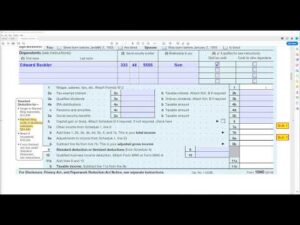How To Find Margin Of Error And Improving Data Accuracy
Content

Although a higher sample size is always ideal with respect to giving you greater precision, it may not always be important depending on the specific research aims. For this purpose, choose a survey tool like Qualaroo that allows you to store your responses on the cloud. Another option is to https://quick-bookkeeping.net/ integrate the survey tool with any third-party platform. For example, remove any redundant questions or steps involved in the survey to avoid survey fatigue and lower the dropout rate. You can also test surveys on a live website to a sample audience with whitelisting and cookie targeting.
What is margin of error in survey?
What is margin of error in a survey? Margin of error, also called confidence interval, tells you how much you can expect your survey results to reflect the views from the overall population.
Furthermore, a researcher may never be able to achieve insider status, such as a person studying different races. In becoming an insider, the sociologist gains the trust of the study subjects, but at the same time loses the perspective of detachment. As an outsider, the sociologist is able to see the large picture and place the observations into a larger meaningful context. A careful balance of insider insight and outsider perspective is needed to produce meaningful sociological research. Therefore, whenever possible, we should use random sampling procedures to ensure that our target population is properly represented. There are multiple online free sample size calculators to help you figure out the required responses for your survey.
3.1 Interpreting the Confidence Coefficient
For example, out of all the birds of prey, you could narrow your research to the African Hawk Eagle in Angola. Confidence interval and confidence level are often used interchangeably, but they do not mean the same thing. Standard deviation measures the spread of data points from the mean value. It’s calculated as the square root of the variance, which is the sum of squared deviations from the mean. Statistics and surveys are practical approximations used to examine populations.
- Once you have a well-designed set of survey questions developed, the next step is to determine how you are going to get people to take your survey.
- In the same way, adding too many choices to your surveys may confuse the respondents, and they might end up choosing an option randomly, skewing your results.
- Typically, the higher the standard deviation, the more dispersed the data is.
- Margin of error is used whenever researchers select a random sample to represent an entire population.
- The ideal sample size for a population of 5,000 people with a confidence level of 95% and a margin of error of 5% is 357.
Of course, you can’t expect people to just share their feedback out of kindness; they need to know that they’ll get something in return for their effort. If you start asking questions right off the bat without offering any background information about the survey, respondents might have reservations about answering the questions. They help respondents understand the purpose of the survey and what it aims to achieve through the feedback. Most of the processes and industries have turned online, and consequently, mobile-optimized solutions are the need of the hour.
Understanding your confidence level
This is because a larger sample size better represents the targeted population. Next, we will go through the table to identify the margin of error for various sample sizes. So, if we take 95% as the confidence level with a 4% margin of error, it implies that your survey result will be above or below 4% over the real population value 95% of the time. This will lessen the margin of error, as the less data variation you have, the more accurately you can estimate a parameter surrounding the population. When you reduce variability, the standard deviation also narrows, causing the margin of error to follow suit. The confidence interval is useful in that it calculates this inherent imprecision to allow researchers to see how trustworthy their survey results are in representing a certain population.

A report may state the percentage of people favoring a bond package, for instance. Let us take a moment and understand why confidence intervals are necessary. Done correctly, the sample will be representative of the universe we’re polling, and so it will accurately measure public opinion. The margin of error is a measure What Is The Margin Of Error & How To Reduce It In Your Survey of how far we would expect a representative sample to deviate from the true value. The margin of error, typically written as +/- X%, tells you how much the results of your study might differ from that of the actual population. It is typically accompanied by the confidence level, usually at 90%, 95% or 99%.
Understanding Confidence Level And Standard Deviation
Applying this at a question level, if the % favourable for “Our policies and procedures are efficient and well-designed” was 33%, the margin of error would be 33% +/-3.0%. In other words, we could say that if all the staff from that work area responded we could be confident that the score would only be a little higher or lower (between 30% and 36%). However, our interpretation of this result wouldn’t be very different – it is still a low result. From all we’ve discussed so far, you should already have a fair idea of the factors that primarily affect the margin of error. These factors are confidence level, sample size, and standard deviation.
- In surveys and similar studies, the margin of error is included to tell the reader how reliable the data is.
- Now, there is a possibility that they would have answered the questions differently if the order had been reversed.
- For example, suppose your survey shows that 62% of your sample size smoke cigarettes.
The lower the margin of error, the greater the credibility of a survey will be. Of course, this should be coupled with a larger sample size for the perfect representative sample. This is because a more inclusive sample size will mirror the actual views of your targeted audience with better accuracy.
Hi, i’m doing a stratified random sampling, total population is 621,103, margin of error 5% n confidence level is 95%, your website helps me a lot doing the calculation. Sampling error is the one type of error that can be easily summarized with a number. Because of this, many tend to think of it as the main way of reporting a survey’s quality. Sampling error refers to the “margin of error” of the results of a survey caused by the fact that you didn’t survey everyone in the population you are surveying – only a sample. The “error” occurs when you draw a conclusion based on a survey result that may have been different if you’d conducted a larger survey to gather a wider variety of opinions.
- It is not appropriate to calculate the margin of error if you selected your sample using a method that is not random; for example, selecting respondents because they have specific characteristics.
- The lower your sample size, the lower your confidence level will be.
- In other words, it’s a way of quantifying how unusual or extreme a specific result is.
- The mean age of this sample is 38 years, with a standard deviation of 7 years.